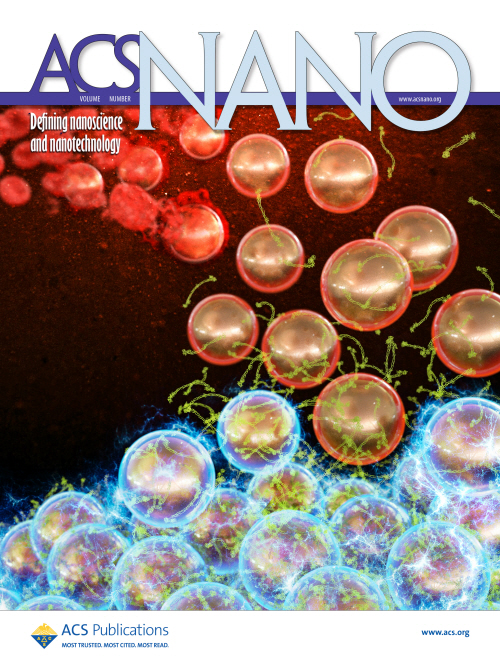
|
|
▲ ACS Nano online thesis cover (Image = Korea University) |
[에너지경제신문 송기우 에디터] Cardiovascular disease is a dangerous disease that can be life-threatening and includes diseases such as heart failure, myocardial infarction, and stroke. It is a terrifying disease in which the survival rate is extremely low if not treated at the hospital immediately after cardiovascular disease occurs. These diseases are not diseases that can be solved by one-time treatment, and such as diabetes, the patient’s condition must be continuously monitored and the risk checked. Biomarkers in the body related to the risk of cardiovascular disease have been studied, and it has been found that precise diagnosis is difficult with one biomarker. In addition to the existing techniques for identifying the risk of disease, fibrinogen, a protein whose concentration in the body increases significantly before and after cardiovascular disease, was measured. In the case of the existing fibrinogen measurement technology, the method using an enzyme has low accuracy and a large error range, making accurate measurement impossible.
The joint research team of Korea University (President Jintaek Jeong), Professor Daesung Yoon, Professor Gyudo Lee, and Professor Jeonghun Lee of Kwangwoon University used fibrinogen receptor (integrin αIIbβ3) present in red blood cell membranes to overcome these limitations. To this end, cell membranes and membrane proteins were extracted from red blood cells and coated on gold nanoparticles having a diameter of 70 nm to create a nano-sized red blood cell mimic. If this mimic is used, it can mimic the blood coagulation process that occurs when a wound is injured, just like normal red blood cells. Specifically, red blood cell mimics aggregated in response to fibrinogen, and the degree of aggregation increased as the concentration of fibrinogen increased. The surface plasmon resonance phenomenon of the gold nanoparticles was changed according to the degree of aggregation according to the concentration of fibrinogen, so that it could be observed.
The biosensor technology developed this time has various advantages over the analysis method of fibrinogen used in existing hospitals. The existing method is an indirect method of analyzing insoluble fibrin, a polymer of fibrinogen, but in the case of a developed sensor, a method of directly detecting the water-soluble monomer fibrinogen. In addition, the sensitivity and specificity were significantly improved, such as reacting only to pbrinogen without being affected by various interfering substances occurring in the blood coagulation process.
Patients in the risk group for cardiovascular disease are living their lives worrying when cardiovascular disease will recur. If patients in these risk groups monitor their own condition and check the risk of cardiovascular disease, the anxiety of patients can be reduced. Moreover, it is expected that more lives can be saved by preventing cardiovascular diseases that will occur. In this regard, Stephen Kaptoge, a senior researcher at the Department of Public Health at the University of Cambridge in the UK, measured the concentration of fibrinogen and CRP to assess the risk of existing cardiovascular disease, saving $23,000 per disease occurrence by removing the risk factor only with medication before cardiovascular disease occurs. Mentioned that it works. This is possible because hospitalization, surgery, and nursing expenses incurred after cardiovascular disease are reduced.
Professor Dae-Sung Yoon said, “The sensor developed this time is a cell membrane-based biosensor developed by naturally simulating the biological phenomenon of the human body, such as the blood coagulation process, and the concept of such a cell membrane biomimetic can be expanded in various ways. For example, various diseases. It is possible to develop biosensors coated with cell membranes that cause diseases by naturally simulating the onset of the disease, and to implement various biomimetic biosensors capable of diagnosing diseases such as cancer, autoimmune diseases, and infectious diseases. ” Said.
This research was conducted as part of the research project of the Natural Simulation Innovation Technology Development Project (Korea Research Foundation), and is a Ph. Bioinformatics Engineering, Corresponding Author) and Professor Jeonghoon Lee (Electrical Engineering, Kwangwoon University, Corresponding Author) participated as the lead authors, and ACS Nano, a prestigious international journal in the field of nanotechnology and multidisciplinary materials (IF 14.588, top 5.3%) It was announced as an online cover on January 30th.
